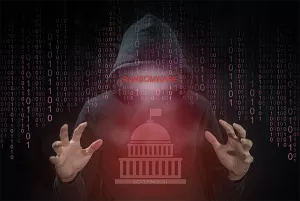The recent ransomware attack on Garmin should be seen as a signal flare for state and local governments. It wasn’t that the attack stood out for its size or its impacts—even though those were substantial. In fact, The Times says experts believe the ransom—a $10 million demand—must have been paid for Garmin to recover its files.
What does this have to do with state and local governments? The perpetrators infected Garmin’s files with WastedLocker, a ransomware strain known to be distributed by the Russian Cybercrime group known as Evil Corp, according to Tech Crunch. With US elections looming, and interference increasing from Russia and other countries, governments are likely to be targeted, with the potential to disrupt elections and governance itself.
That’s all pretty scary. And it isn’t a stretch to see why Russia would want to target state and local governments. So what should your government IT team do so you don’t have to live in fear of an attack?  Prevention is your best defense, so it’s time for every government IT department to make sure that its cybersecurity solutions are up to date—spam filters, firewalls, antivirus software—and that patches are installed on release.
Prevention is your best defense, so it’s time for every government IT department to make sure that its cybersecurity solutions are up to date—spam filters, firewalls, antivirus software—and that patches are installed on release.
Keep Your Defenses Up to Date

Education is Critical
Social engineering attacks—from phishing to malware in attachments—have become so sophisticated that it’s incredibly hard to distinguish what’s legitimate from what’s malicious. According to CSO Online 94% of malware is delivered via email, and phishing attacks account for more than 80% of reported security incidents. So make sure everyone in your organization is trained in spotting social engineering attempts and knows what to do and who to reach out to if they receive a suspicious contact.Plan for Recovery
Mitigating the damage from a successful attack is the only way to avoid paying a ransom, or worse, losing your data. Update your backup and disaster recovery plan—including reviewing your RTO and RPO—so you’re sure it meets compliance requirements and that you can too. And put a backup and disaster recovery solution (BDR) in place that makes it easy.BDR for Local Governments
For smaller government entities with simpler IT environments, StorageCraft® OneXafe® Solo does just that. Solo is a backup appliance that is simple to deploy and manage in a few steps—plug it in, connect to the internet, and your data starts being protected in minutes. Once set up, Solo centralizes management for backup schedules, backup retention, and replication to meet your RTO and RPO. Solo then streams your backup data to the cloud, where it is encrypted and secure. And, if an attack is successful, Solo lets you restore your data in seconds using StorageCraft VirtualBoot™ technology. Because of its simplicity and cost-effective approach, Solo is a good choice for protecting remote and branch offices, too.BDR for State and Larger Governments
For bigger government entities that need more scalability and flexibility, StorageCraft OneXafe converged data platform is worth taking a look at. OneXafe unifies enterprise-class protection with scale-out storage. StorageCraft ShadowXafe software, featuring next-generation data protection, and StorageCraft Cloud Services cloud-based disaster recovery are also options worth considering depending on your needs. All provide strong data protection, easy backup management, and fast disaster recovery.Conclusion
Regardless of the hardware, software, or strategy you use to fight against cybercrime, the time to make sure you’re government entity’s data is safe is now. Schedule a demo with a StorageCraft engineer to learn more about how we can help.You May Also Like
- Backup and Disaster Recovery Business Continuity Cybersecurity Data Protection Data Resilience Ransomware
How Ransomware Works and What Your Company Can Do About It Today
April 18th, 2024 - Compliance Cybersecurity Data Protection
NIST Releases Updated Cybersecurity Framework
February 27th, 2024 - Backup and Disaster Recovery Business Continuity Cloud Compliance Cybersecurity Data Protection
How the SEC’s Cybersecurity Disclosure Rules Can Guide SaaS Data Protection for Mid-Size Companies
February 8th, 2024